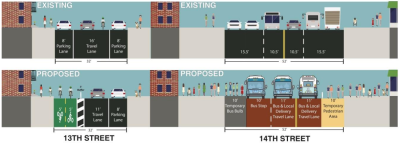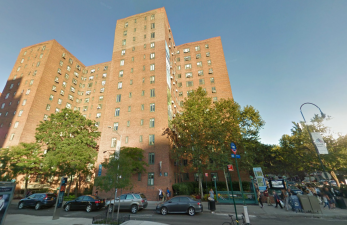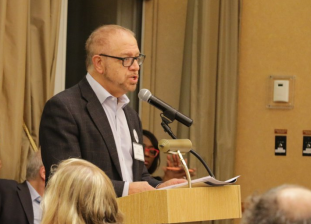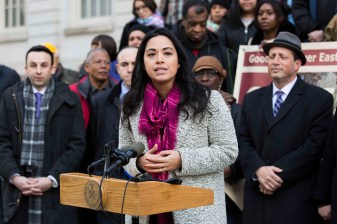Without the L Train, the Best Shot to Avoid Traffic Hell Is a Car-Free 14th Street
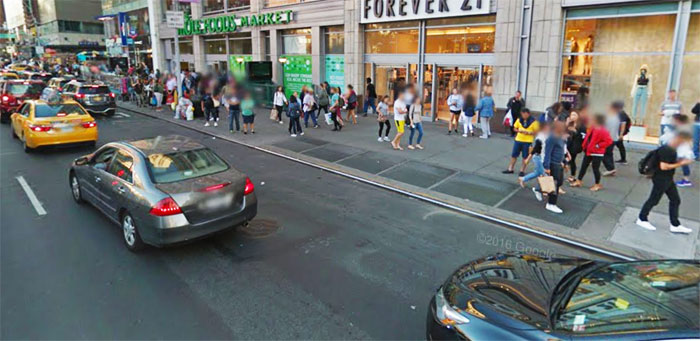
When Sandy repairs knock out L train service west of Bedford Avenue, the only way to avoid a traffic nightmare is to set aside street space exclusively for spatially efficient buses, biking, and walking. But not all Manhattanites are convinced. A forum hosted by the Community Board 2 transportation committee last night provided a preview of the fight to come.
While DOT and the MTA have yet to release specific L train replacement plans, advocates have no shortage of solutions. The Regional Plan Association has put forward a comprehensive plan for a network of busways and express bus service along 14th Street, the East Side’s north-south avenues, and North Brooklyn. And Transportation Alternatives is making the case for “PeopleWays” dedicated to buses, bikes, and pedestrians on 14th Street in Manhattan and Grand Street in Brooklyn.
Some Manhattan block associations are already stirring against the PeopleWay concept. The Council of Chelsea Block Associations, which represents 15 different groups in the neighborhood, voted unanimously last month against “[diverting] private vehicle traffic away from 14th Street,” citing “fear” of “the impact on…safe and quality of life” in a letter to MTA Chairman Tom Prendergast and DOT Commissioner Polly Trottenberg [PDF].
The West 12th Street Block Association has, in emails to CB 2, warned that closing 14th Street to private vehicle traffic “would move traffic to 12th and 13th Street” and “impose a hardship on residents, shops, and garages on 14th Street,” according to CB 2 Chair Terri Cude.
But if they think traffic will get worse with a car-free 14th Street, imagine if the city fails to make surface transit an appealing option.
Already, 14th Street carries between 20,000 and 37,000 vehicles and more than 32,000 bus riders each day, according to RPA. Tens of thousands riders who currently use the L train will be looking for a new way to get across town. Without a clear path on 14th Street, buses will be slower than walking. And if buses aren’t an appealing option, a lot of people are going to pile into cabs and Ubers, and those trips won’t be confined to 14th Street. That is the real nightmare traffic scenario for crosstown streets.
A 14th Street busway, coupled with new bike and pedestrian infrastructure, is the only way to keep L train riders moving.
“We can’t look at this as if we’re going to have a continuum of current conditions,” committee member Janet Liff said last night. Contrary to what some other committee members suggested, we don’t need the MTA or DOT to weigh in to know that dramatic changes to 14th Street are necessary.
Annie Weinstock and Walter Hook at BRT Planning International say that 14th Street needs the full package — car-free busways, off-board fare collection, level boarding — to transport as many people as the L train does currently.
For Manhattanites who want avoid worst-case scenario traffic jams and suffocating gridlock spilling over onto side streets, the only question about 14th Street is not “if” it should become a car-free transitway, but how to make it the best car-free transitway it can be before the L-pocalypse comes in 2019.
